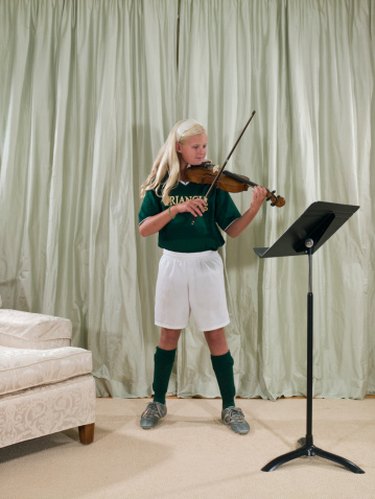
Drapes may stretch. Fabric is made of threads woven together, and there is no glue holding these threads in place. Knowing how the fabric may react after hanging will help you choose fabrics that should not stretch. Generally, natural fibers will stretch more than man-made fibers, but the weave of the fabric will also affect stretching. Loose-weave fabrics tend to stretch more.
Weight
Video of the Day
The most common reason drapes stretch is the weight of the treatment. The actual number of pounds is not the issue, but rather the weight of the face fabric hanging from itself. The longer the panels, the more possibility there is for stretching. In drapery construction the side hem is sewn through all layers, creating a vertical line of stitching that helps prevent stretching. The side hem area may not stretch, but the fabric between the side hems may sag because there are no vertical lines of support.
Video of the Day
Fibers
Some fibers will stretch more than others. Natural fibers such as silk, cotton and the semi-natural rayon will stretch and stay in the stretched position. Linen is a hollow fiber; it stores moisture in this hollow. When the air is dry, the hollow core empties and the fiber shrivels up a bit as the thread 'shrinks'. Linen looks wrinkled in dry climates. When the air is very moist, the core absorbs moisture and the fiber straightens out. The linen thread will now be longer and look less wrinkled. The length of linen drapes may change by 1 or more inches per season.
Rehem
If the drapes are not linen, one solution is to have them rehemmed. A professional should come and mark the drapes while they are hanging. The new bottom hem will not be straight on the grain of fabric; extra care must be taken in the measuring.
Alternative Solution
Professional drape makers often plan for stretching by adjusting the length of the drapes initially. For example, if they expect the drape to stretch an inch, they may construct the treatment 1 inch shorter than ordered and instruct the installer to hang them at the after-stretch position. If the rod was not installed at the correct height, the stretching may be more noticeable. Moving the rod is an option.